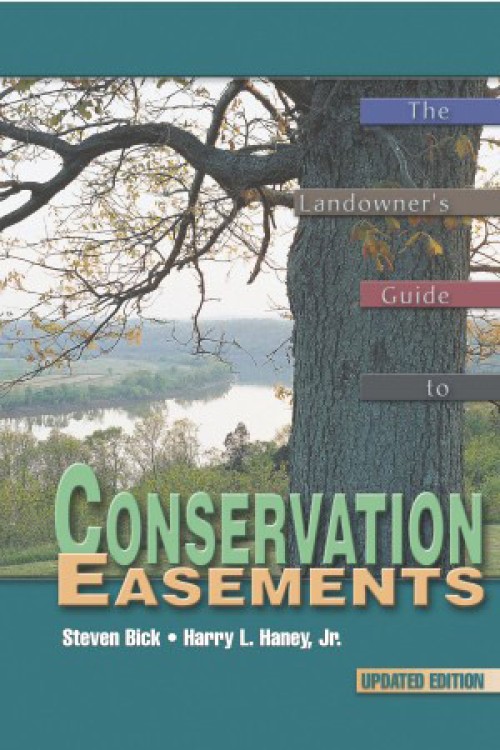by By Steven Bick and Harry L. Haney, Jr.
Kendall/Hunt Publishing Company, 2003
In the world of forestry and conservation, one of the most significant developments in the last three decades has been the steadily increasing use of conservation easements. Through a process in which a landowner transfers the development rights to his or her property either by selling or donating those rights to a land trust, millions of acres have been conserved. Much of the early work in this field was to conserve family farms that were ripe targets for developers, but recently the largest conserved holdings have been forestland. Working forest easements ensure that the land will never be developed and that it will continue to be managed for the production of forest products according to sound principles of forestry.
In this update of the 2001 edition, Steven Bick and Harry Haney have put together a tremendous amount of useful information for landowners who are contemplating entering into such an agreement. Since the two are foresters and an adjunct and full professor of forestry, respectively, their book is more useful for owners of forestland than of farmland. The book often has a tone that is sure to rile up land trust staffers: “The popularity of conservation easements is at least partly due to the publicity and hype originating with the organizations that benefit by receiving them.” And “Be wary of anyone who attempts to portray a conservation easements as a tool…. Anyone who views a conservation easement as a tool is probably trying to accomplish something and then move on, taking a sense of fulfillment with them and leaving behind the responsibility for future consequences.”
But the authors are not anti-land trust, and their skepticism seems ultimately to be a healthy one. This is a cautionary book, one that guides landowners through all the elements typical of today’s easement deeds, including affirmative rights, restrictions, reserved rights, and terms and conditions. It covers the various tax (income, estate, and property) implications of placing an easement and makes it clear that everyone needs to carefully evaluate their own circumstances before assuming they’ll receive tax benefits from ceding the development rights to their land. Bick and Haney are constantly encouraging people to watch out for their own interests in order to have a successful outcome, which to the authors means that the grantor benefits from it.
The book ends with “There are many satisfied landowners who have created and granted conservation easements on their land. Whether a conservation easement matches your goals, or you choose to look into other alternatives, be sure to make informed decisions that will satisfy you and your heirs for all time.”
The Landowner’s Guide to Conservation Easements will help people make informed decisions and have a say in what the easement affirms and denies. The appendices are rich with examples of language from existing easements that are worth perusing if you are considering this route. At the heart of the authors’ advice is a sober understanding that a grantor and a grantee have different needs and goals. Bick and Haney assume that land trusts are well equipped to look out for their own interest in negotiating the deed. And they assume that landowners are not inherently so.
If landowners put aside for the moment the feeling of accomplishment they’ll get from having protected their land from future development, and go through the painstaking diligence the authors recommend, it is quite likely they can have their land and conserve it, too.


